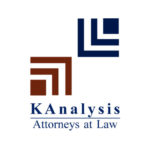Patent Analytics: A Comprehensive Guide
There are several grounds upon which the registration of a trademark may be refused. Some of the most common grounds for refusal of the trademark are as follows:
Tools and Resources for Patent Analytics
There are a wide variety of tools and resources available for conducting patent analytics, including online databases, software programs, and specialized consulting services. Some of the most commonly used tools and resources include:
Online Databases:
There are a number of online databases that provide access to patent and intellectual property data, including the USPTO Patent Full-Text and Image Database, the European Patent Office’s Espacenet database, and the World Intellectual Property Organization’s PATENTSCOPE database. These databases often offer advanced search capabilities and can be used to identify relevant patents and published patent applications.
Software Programs:
There are also a number of software programs that can be used for conducting patent analytics, including text mining tools, network analysis tools, and visualization tools. These programs can help to organize and analyze large volumes of patent data, and can provide valuable insights and recommendations based on the patent data.
Specialized Consulting Services:
In addition to online databases and software programs, there are also specialized consulting services that can help you to conduct patent analytics. These services often have expertise in particular industries or areas of intellectual property, and can provide valuable insights and guidance on how to use patent analytics to inform your business decisions.
Techniques for Patent Analytics
There are a number of techniques that can be used for conducting patent analytics, including:
1. Text Mining:
Text mining involves using algorithms and software tools to analyze large volumes of patent text data and identify patterns and trends. This technique can be used to identify relevant patents and published patent applications, and can also be used to identify common themes and trends within a particular technological field.
2. Network Analysis:
Network analysis involves analyzing the relationships between different patents and published patent applications in order to identify patterns and trends. This technique can be used to identify key players and influencers in a particular field, and can also be used to identify potential collaboration opportunities.
3. Visualization Techniques:
Visualization techniques involve using graphical and visual representations of patent data to facilitate analysis and interpretation. These techniques can be particularly useful for understanding complex data sets, and can help to identify patterns and trends that may not be apparent from raw data.
Applications of Patent Analytics in Different Industries
Patent analytics is being used in various industries to inform business decisions and drive innovation. Some of the industries where patent analytics is particularly prevalent include:
1. Tech:
Patent analytics is widely used in the tech industry to identify trends and opportunities in areas such as software, hardware, and telecommunications. By analyzing patent and intellectual property data, tech companies can identify potential business opportunities, identify potential competitors, and develop effective intellectual property strategies.
2. Healthcare:
Patent analytics is also widely used in the healthcare industry to identify trends and opportunities in areas such as medical devices, pharmaceuticals, and biotechnology. By analyzing patent and intellectual property data, healthcare companies can identify potential business opportunities, identify potential competitors, and develop effective intellectual property strategies.
3. Energy:
Patent analytics is also used in the energy industry to identify trends and opportunities in areas such as renewable energy, fossil fuels, and energy storage. By analyzing patent and intellectual property data, energy companies can identify potential business opportunities, identify potential competitors, and develop effective intellectual property strategies.
4. Manufacturing:
Patent analytics is also used in the manufacturing industry to identify trends and opportunities in areas such as materials, robotics, and machine learning. By analyzing patent and intellectual property data, manufacturing companies can identify potential business opportunities, identify potential competitors, and develop effective intellectual property strategies.
Conclusion
Patent analytics is an essential tool for businesses that want to stay ahead of the curve and drive innovation. By using tools and resources such as online databases, software programs, and specialized consulting services, and by using techniques such as text mining, network analysis, and visualization, businesses can conduct a comprehensive patent analytics analysis and use the insights gained to inform their business decisions. Patent analytics is being used in a wide variety of industries to drive innovation and stay competitive, and by leveraging the power of patent analytics, businesses can position themselves for success in today’s fast-paced, technology-driven world.
The Patent(Amendment) Rules 2021
Artificial Intelligence: IPR In India
Patents In India: Why You Should Apply?
Consequences of not Patenting your Innovation
Patent Analytics: A Comprehensive Guide
There are several grounds upon which the registration of a trademark may be refused. Some of the most common grounds for refusal of the trademark are as follows:
Tools and Resources for Patent Analytics
There are a wide variety of tools and resources available for conducting patent analytics, including online databases, software programs, and specialized consulting services. Some of the most commonly used tools and resources include:
Online Databases:
There are a number of online databases that provide access to patent and intellectual property data, including the USPTO Patent Full-Text and Image Database, the European Patent Office’s Espacenet database, and the World Intellectual Property Organization’s PATENTSCOPE database. These databases often offer advanced search capabilities and can be used to identify relevant patents and published patent applications.
Software Programs:
There are also a number of software programs that can be used for conducting patent analytics, including text mining tools, network analysis tools, and visualization tools. These programs can help to organize and analyze large volumes of patent data, and can provide valuable insights and recommendations based on the patent data.
Specialized Consulting Services:
In addition to online databases and software programs, there are also specialized consulting services that can help you to conduct patent analytics. These services often have expertise in particular industries or areas of intellectual property, and can provide valuable insights and guidance on how to use patent analytics to inform your business decisions.
Techniques for Patent Analytics
There are a number of techniques that can be used for conducting patent analytics, including:
1. Text Mining:
Text mining involves using algorithms and software tools to analyze large volumes of patent text data and identify patterns and trends. This technique can be used to identify relevant patents and published patent applications, and can also be used to identify common themes and trends within a particular technological field.
2. Network Analysis:
Network analysis involves analyzing the relationships between different patents and published patent applications in order to identify patterns and trends. This technique can be used to identify key players and influencers in a particular field, and can also be used to identify potential collaboration opportunities.
3. Visualization Techniques:
Visualization techniques involve using graphical and visual representations of patent data to facilitate analysis and interpretation. These techniques can be particularly useful for understanding complex data sets, and can help to identify patterns and trends that may not be apparent from raw data.
Applications of Patent Analytics in Different Industries
Patent analytics is being used in various industries to inform business decisions and drive innovation. Some of the industries where patent analytics is particularly prevalent include:
1. Tech:
Patent analytics is widely used in the tech industry to identify trends and opportunities in areas such as software, hardware, and telecommunications. By analyzing patent and intellectual property data, tech companies can identify potential business opportunities, identify potential competitors, and develop effective intellectual property strategies.
2. Healthcare:
Patent analytics is also widely used in the healthcare industry to identify trends and opportunities in areas such as medical devices, pharmaceuticals, and biotechnology. By analyzing patent and intellectual property data, healthcare companies can identify potential business opportunities, identify potential competitors, and develop effective intellectual property strategies.
3. Energy:
Patent analytics is also used in the energy industry to identify trends and opportunities in areas such as renewable energy, fossil fuels, and energy storage. By analyzing patent and intellectual property data, energy companies can identify potential business opportunities, identify potential competitors, and develop effective intellectual property strategies.
4. Manufacturing:
Patent analytics is also used in the manufacturing industry to identify trends and opportunities in areas such as materials, robotics, and machine learning. By analyzing patent and intellectual property data, manufacturing companies can identify potential business opportunities, identify potential competitors, and develop effective intellectual property strategies.
Conclusion
Patent analytics is an essential tool for businesses that want to stay ahead of the curve and drive innovation. By using tools and resources such as online databases, software programs, and specialized consulting services, and by using techniques such as text mining, network analysis, and visualization, businesses can conduct a comprehensive patent analytics analysis and use the insights gained to inform their business decisions. Patent analytics is being used in a wide variety of industries to drive innovation and stay competitive, and by leveraging the power of patent analytics, businesses can position themselves for success in today’s fast-paced, technology-driven world.
The Patent(Amendment) Rules 2021
Artificial Intelligence: IPR In India
Patents In India: Why You Should Apply?
Consequences of not Patenting your Innovation
Patent Analytics: A Comprehensive Guide
There are several grounds upon which the registration of a trademark may be refused. Some of the most common grounds for refusal of the trademark are as follows:
Tools and Resources for Patent Analytics
There are a wide variety of tools and resources available for conducting patent analytics, including online databases, software programs, and specialized consulting services. Some of the most commonly used tools and resources include:
Online Databases:
There are a number of online databases that provide access to patent and intellectual property data, including the USPTO Patent Full-Text and Image Database, the European Patent Office’s Espacenet database, and the World Intellectual Property Organization’s PATENTSCOPE database. These databases often offer advanced search capabilities and can be used to identify relevant patents and published patent applications.
Software Programs:
There are also a number of software programs that can be used for conducting patent analytics, including text mining tools, network analysis tools, and visualization tools. These programs can help to organize and analyze large volumes of patent data, and can provide valuable insights and recommendations based on the patent data.
Specialized Consulting Services:
In addition to online databases and software programs, there are also specialized consulting services that can help you to conduct patent analytics. These services often have expertise in particular industries or areas of intellectual property, and can provide valuable insights and guidance on how to use patent analytics to inform your business decisions.
Techniques for Patent Analytics
There are a number of techniques that can be used for conducting patent analytics, including:
1. Text Mining:
Text mining involves using algorithms and software tools to analyze large volumes of patent text data and identify patterns and trends. This technique can be used to identify relevant patents and published patent applications, and can also be used to identify common themes and trends within a particular technological field.
2. Network Analysis:
Network analysis involves analyzing the relationships between different patents and published patent applications in order to identify patterns and trends. This technique can be used to identify key players and influencers in a particular field, and can also be used to identify potential collaboration opportunities.
3. Visualization Techniques:
Visualization techniques involve using graphical and visual representations of patent data to facilitate analysis and interpretation. These techniques can be particularly useful for understanding complex data sets, and can help to identify patterns and trends that may not be apparent from raw data.
Applications of Patent Analytics in Different Industries
Patent analytics is being used in various industries to inform business decisions and drive innovation. Some of the industries where patent analytics is particularly prevalent include:
1. Tech:
Patent analytics is widely used in the tech industry to identify trends and opportunities in areas such as software, hardware, and telecommunications. By analyzing patent and intellectual property data, tech companies can identify potential business opportunities, identify potential competitors, and develop effective intellectual property strategies.
2. Healthcare:
Patent analytics is also widely used in the healthcare industry to identify trends and opportunities in areas such as medical devices, pharmaceuticals, and biotechnology. By analyzing patent and intellectual property data, healthcare companies can identify potential business opportunities, identify potential competitors, and develop effective intellectual property strategies.
3. Energy:
Patent analytics is also used in the energy industry to identify trends and opportunities in areas such as renewable energy, fossil fuels, and energy storage. By analyzing patent and intellectual property data, energy companies can identify potential business opportunities, identify potential competitors, and develop effective intellectual property strategies.
4. Manufacturing:
Patent analytics is also used in the manufacturing industry to identify trends and opportunities in areas such as materials, robotics, and machine learning. By analyzing patent and intellectual property data, manufacturing companies can identify potential business opportunities, identify potential competitors, and develop effective intellectual property strategies.
Conclusion
Patent analytics is an essential tool for businesses that want to stay ahead of the curve and drive innovation. By using tools and resources such as online databases, software programs, and specialized consulting services, and by using techniques such as text mining, network analysis, and visualization, businesses can conduct a comprehensive patent analytics analysis and use the insights gained to inform their business decisions. Patent analytics is being used in a wide variety of industries to drive innovation and stay competitive, and by leveraging the power of patent analytics, businesses can position themselves for success in today’s fast-paced, technology-driven world.
The Patent(Amendment) Rules 2021
Artificial Intelligence: IPR In India
Patents In India: Why You Should Apply?
Consequences of not Patenting your Innovation
Connect with our Experts to resolve your legal issues!
KAnalysis is a boutique full service law firm, well positioned to represent its international and domestic clients.
© 2007 – 2024 KAnalysis Consultant Private Limited. All Rights Reserved




